BBC's Blog
March 27, 2014
BBC iPlayer Radio update
I’m pleased to confirm that this week we released an update to our mobile apps for iOS and Android (v1.5) which has two key user benefits. Firstly we are introducing Favourites into the app, which has consistently been one of the most requested features from users since we launched. We know that many people already value having a list of their favourite programmes on the web, and to ensure that same list is available in our apps we ask you to log in to BBC iD first. This means you can add a programme via a browser on any device, and then quickly access it on your Android or iOS device via the mobile app, or vice-versa.
Secondly, we have improved the search functionality in the mobile app by remembering your previous searches so that as soon as you start to enter a term in the search box, we show you terms and programmes you searched for in the past. This means you can find content much more quickly with fewer screen taps. We are looking to introduce similar enhancements to Search on the web soon.
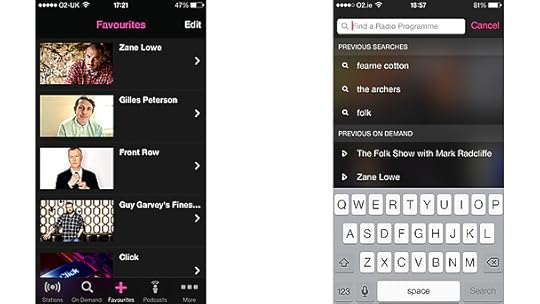
The upgraded BBC iPlayer Radio app: Favourites (left) and Search (right)
Now that we have Favourites we believe that the experience for radio listening is better than in the BBC iPlayer mobile app, so users will shortly notice that they will be directed to use the BBC iPlayer Radio app for all radio programmes, live or on-demand. Favourites from the BBC iPlayer mobile app will not be carried over to the iPlayer Radio app, as they are only stored locally on the device meaning migration is not achievable.
Last week we upgraded all BBC stations to the latest version of the Radioplayer console. This is the pop-out-player you get when you listen live to BBC radio stations via desktop. The new console has some significant advantages over the previous version, including the ability to more easily save your favourite stations, improved search and navigation around Radioplayer features, and the player now works on devices which don’t support Flash. Some users may have noticed that we no longer offer a “Hi” and “Lo” bandwidth option, as we found usage of the “Lo” option was extremely low (under 0.25% of streams). See the Radioplayer blog for more information on the new console.

The new Radioplayer console on desktop
On the web we have corrected a bug which was causing people who still use an old browser - Internet Explorer 8 – significant problems. However, we have reviewed the platforms we can support and decided to no longer support IE8 based on the facts that usage is very low and the cost in terms of development time is very high. These collectively mean it no longer offers good value for money. Our request and recommendation is to please upgrade to a more modern browser if you are able to, to ensure the best possible experience.
Another change is that we now direct users to more relevant category aggregations, with the aim of showing list of programmes that are currently available to listen to rather than fuller lists which contain programmes which have expired. So, on Radio 4 for example, we now link to the Comedy genre filtered by “Available now” and “A-Z”, meaning the list you see shows all Radio 4 comedy programmes you can listen to right now. We know from feedback we’ve received that this has been an issue for some users, so we’re pleased to make finding programmes by category a little easier now.
In response to feedback via our previous blog posts and email, over the coming months we’ll be looking at adding a programme A-Z link on our homepage, at how we display schedule information, and at functionality around Favourites. We read all feedback we receive, and it helps us prioritise our backlog, so please do leave a comment below or via our feedback page.
March 21, 2014
BBC Weather launches responsive website
This week we launched a new responsive site for BBC Weather. As our MVP (minimum viable product) release, this replaces the old feature phone Weather site with an optimised experience for feature phone and smartphone users.
It's a work-in-progress, and the first step in our plans to move to a fully responsive web solution on mobile, tablet and desktop. In true Agile, we're expecting to roll out more features and content over the coming months. Naturally we're also listening to our users as we prototype and tweak new features.

The new mobile site includes recent locations and horizontal scrolling
Almost half our audience access Weather from mobile and tablets, and like so many online products this proportion is only going to increase. I know that many of our users (around 19%) are catered for via our Android and iOS apps, but it's been a priority for us to make sure the website is also optimised for a multitude of devices.
From previous user feedback, we can see the success of the iOS and Android app has been its simplicity and ease of use. Therefore, it's no surprise that we followed these design patterns for the responsive version of the site. Smartphone users will immediately notice the introduction of horizontally-scrolling day tabs and hourly information, like the app.
However, one key difference for web site development is the depth and richness of content available. Our static desktop website covers everything from simple location forecasts to detailed tide and coastal data, video, picture galleries, maps and infographics. We will need to reflect this in future iterations of the responsive site. For this reason, the first iteration of the responsive site is opt-in at m.bbc.co.uk/weather. We won't be automatically redirecting mobile users until we have built a satisfactory base of content and features on that platform.
Approach and prototyping

Back to the drawing board to bring together design patterns across devices and platforms
Naturally, it's been a 'mobile first' strategy for the new site and we've been keen to bring in more consistent designs patterns across all our Weather products. In the last three months, we've employed a cycle of prototyping, testing, and building to release the first version of the responsive site.
One of the key new ideas for launch is our 'Recent Locations' functionality, which stores the user's last five weather forecast locations for easy access and passive personalisation. Main features of new site include:
* Location Search auto-suggest
* Recent locations functionality - stores your last five locations
* Horizontally scrolling hourly forecast and detail slots for smartphones
* English/Welsh versions integrated via settings
* Weather measurements available in metric or imperial
* Link to Met Office Severe Weather Warnings information
* Link to Environmental Agency Flood Warnings information
* Feedback email link to 'Tell us what you think'
Feedback
If you've already seen the site, you'll have noticed the bright yellow banner asking you to 'tell us what you think'. We've already had a healthy flow of responses - some positive, some less so. We are monitoring these responses carefully and will address any issues that come up.
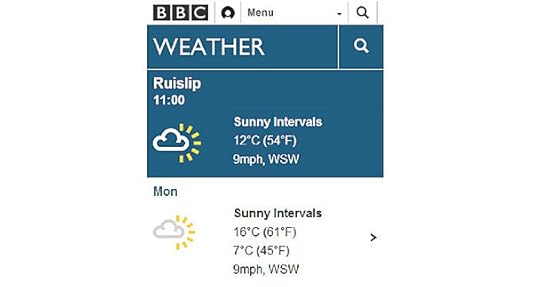
Many feature phone users are missing the 5 day overview so we will be reintroducing it soon
One issue coming through loud and clear is that many users on more basic phones are missing the old vertical five-day overview. We're addressing this now and will be reintroducing the overview in the next few weeks. Feel free to tell us what you think and, if you have a particular issue, it's always helpful to tell what device you're using.
That's all for now, but I'll keep you posted on new developments and the next stages in the future.
Mike Burnett is an executive product manager for BBC Weather
March 19, 2014
BBC iWonder home page launched
Hello again. I'm Chris Sizemore, Executive Editor for the BBC's Knowledge & Learning product.
Today we're launching the BBC iWonder homepage. BBC iWonder is a new factual and educational brand from the BBC, and it's all about feeding the UK's curiosity.
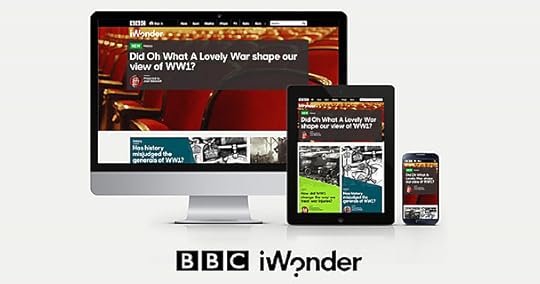
The BBC iWonder home page on three screens
BBC iWonder provides thought-provoking answers to the questions sparked in your everyday life - questions sparked by BBC programmes, what's in the news, important anniversaries, or what's trending on social media. The iWonder homepage will always feature plenty of examples of the Interactive Guide, our new flagship content format that makes learning feel effortless and entertaining. An Interactive Guide is more than just a webpage - it's a visually exciting experience that invites you to lean forward, "turn the page" and find out what happens next. The design is uncluttered, the learning is subtle, and within every exploration of iWonder content you'll find a moment to reflect: an opportunity for a deeper appreciation of a topic. I’m hoping that over time BBCiWonder will grow into a tool that helps people track, plan and discover the next steps in their learning.
You can check the BBC iWonder homepage regularly to see the latest Guides, top up your inspiration, and find something unexpected and thought-provoking to get curious about.
In time, the BBC iWonder homepage will introduce you to something surprising, provocative, exciting and challenging each day, hand-picking the most inspiring BBC content and blending it with the most wondrous stuff from around the Web and BBC Online. And, as you'd expect from the BBC and iWonder, the experience is fully responsive across different digital devices and screen sizes.
So far, BBC iWonder Interactive Guides have explored themes from World War One, such as "Pigeon vs telephone: which worked best in the trenches?", in support of the BBC's ongoing World War One Centenary season. Our next step is to begin publishing Guides about other topics, for example: "Could you learn to sing Calon Lân in 30 minutes?" and from additional genres such as Science: "How do we know the Big Bang actually happened?". So, keep an eye out over the next few weeks as we'll be adding new and exciting content to the homepage.
We're also launching a BBC iWonder presence on the social network Twitter today. Twitter is a natural place to exhange knowledge, and is already used by many users who we know will appreciate iWonder and can help us get the word out to those who'll probably enjoy it, but haven't heard about iWonder yet. In addition to our Interactive Guides, we'll often highlight something really wondrous from the Web - after all, the BBC doesn't, by any stretch of the imagination, have a monopoly on producing or publishing the kind of content that keeps your curiosity piqued! Over the course of the next months, of course, we'll expand onto other appropriate social networks where BBC iWonder can best serve licence fee payers.
My ambition is for BBC iWonder to combine world-class story-telling with cutting edge digital innovation. I hope you'll agree that iWonder feels fresh and looks amazing on tablets and smartphones. The new BBC iWonder homepage gives your curiosity a new jumping-off point - so if you are curious about iWonder, bookmark it and follow @BBCiWonder.
I'd love to hear what you think about our new homepage - please do leave comments below.
Chris Sizemore is Executive Editor, BBC iWonder
#newsHACK II: the 2014 News Industry Innovation Event
BBC News Labs are pleased to announce #newsHACK II - a news industry innovation event on 1st & 2nd May 2014.

Competition winners at the first newsHACK event last year
Following the success of #newsHACK in 2013, this event will see 30 teams made up of news organisation and academic institutions from across the British Isles take part in a competition to prototype news experiences and journalism tools of the future.

Participants at the first newsHACK in 2013
The event is a partnership between Global Editors Network (sponsored by Google) and BBC Connected Studio, as part of BBC News Labs innovation programme.
The event will be hosted in Glasgow and Dublin (2 venues concurrently) and is forming part of the Global Editors Network 2013-2014 global Editors Lab Hack Days programme - 22 Hack events around the world, culminating in the Global Editors Hackdays final in June.
Two teams from #newsHACK II will win places in this Global Editors Network final, which will be in Barcelona.
The overarching theme of the event is “The future of news curation”, which focusses on the challenge of how news organisations cope with the editorial challenges and opportunities presented by data in the newsroom, and provide the richest possible experience for audiences across devices and modes of consumption.
This will include, but is not limited to, these categories:
1. Context for the News - Prototype a News experience that provides users with the "back story": explainers, key information, archive content, "why this is in the News", etc. Look for connections, content and design devices that address a varying knowledge of key concepts in each story.
2. Connecting the News - Prototype a News experience that provides serendipitous, surprising and relevant journeys across the News, and one that encourages discovery and sharing. Look for ways to pique audience interests, to tap into social media habits, and support consumption across devices.
3. Theming the News with "Story types" - Prototype a novel approach to story groupings. Linked data topics are useful and well understood, so how might we use "Story types" to group stories and provide further personalisation capability? For example, there are possibilities in sentiment-driven, or "narrative type" groupings - e.g. "about unlikely heroines", "with famous victims", "with humourous elements" - that we could use in combination with Topics.
Importantly, in all areas we are focussing on innovation at scale, and how organisations can succeed in these categories without driving up costs "per News story".
BBC News Labs will be providing the News Labs APIs and curation tools to participants for prototyping purposes, featuring auto-tagged content and curated News stories from across the British Isles. This will help teams by providing News content connected via linked data Topics and Storylines.
Further details of the competition categories, and documentation on the new technologies available at the event, will be published in April.
While the event has a competitive basis, the hope is that (as happened in #newsHACK 2013) the participants will collaborate, seed new ideas, and share and solve common problems for the News industry.
If you are part of a News Organisation, or Academic institution, and would like to submit a multidiscipline team of up to 5, please apply through Eventbryte.
If you have any further questions please email BBC Connected Studio.
Matt Shearer is Innovation Manager, BBC News Labs
BBC iPlayer apps on Chromecast
Greetings.
You may have noticed that Google launched a new device in the UK today called Chromecast. I've been working with the team that has added support for this platform to BBC iPlayer and I wanted to tell you a little a bit about it and what we have planned.

What is Chromecast?
Chromecast is an HDMI dongle that you plug into your TV. It has a Wi-Fi chip built into it, not much memory, and can run simple web apps and stream media.
It allows you to find content on your mobile phone or tablet and play that content on your TV. In a way, it is similar to what you can do right now with BBC iPlayer using a technology called AirPlay if you have an iPhone or an iPad, and an Apple TV.
The BBC iPlayer app, in the case of these technologies, works not by physically streaming the content from your mobile to your TV, but by sending a message from your mobile to, for example, the Chromecast dongle to tell it to request a piece of content directly from a BBC server and play it on your TV. From this point on, the Chromecast dongle does all the heavy lifting of decoding and playing the video stream. Your mobile device works more like a remote control and just sends and receives messages from the Chromecast about what is playing. This is much easier on your device's battery and much more efficient in terms of the number of bytes zipping back and forth across your network.
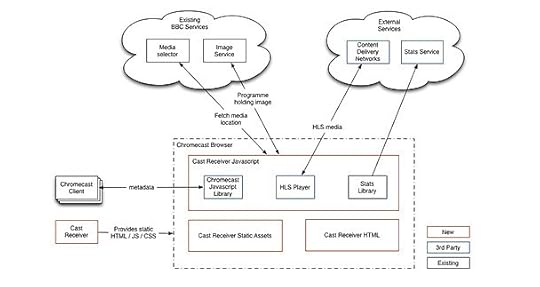
How Chromecast links up with BBC iPlayer and other services
One of the reasons we decided to support Chromecast was that Apple TV currently works only with Apple devices. Chromecast has SDKs available for a number of different platforms including iOS, Android, and the Chrome browser for laptop and desktop computers. Today we've added support to the latest versions of both the Android and iOS versions of BBC iPlayer. Soon, we will also be adding support for the Chrome web browser on Mac, Windows, Linux, and Chrome OS desktop and laptop computers for the new web version of iPlayer.
By the way, one platform that Chromecast cannot currently support is the Amazon Kindle. This is because some of the key libraries needed to support Chromecast on Android are included as part of Google Play Services. These are not part of the Kindle OS (which is built on top of Android, but is not exactly the same as Android). We recognize that the Kindle is an important device for BBC iPlayer in terms of usage and we have, on behalf of our users, asked Google to do what they can to support this platform.
Streaming details
One benefit of having Chromecast manage the video streams playing on the television is that we can provide bitrates and video profiles that are more suitable for a big screen than a small screen. We constantly re-evaluate our video and device profiles in the BBC and may change these profiles in the future, but these are what we're using today for our on-demand content:
796 kbps at a resolution of 640 x 360
1500 kbps at a resolution of 832 x 468
2800 kbps at a resolution of 1280 x 720
We start playback at 1500 kbps and switch up or down based on how well the network can handle the stream. This happens continuously while the stream is playing. All of this should be invisible to the user but should mean the stream starts quickly, plays at the best quality possible, and buffers only when network conditions are truly dire.
One capability that won't be there at launch is the ability to play audio-only streams, such as BBC radio programmes. This is something we will be working on in the future.
Future Plans
Chromecast is a new technology. As with all new technology, there are bound to be things we don't get quite right at first or weren't able to fit in in time for launch. We're already planning the next release of BBC iPlayer with Chromecast. One of the things I'm very keen to get right is to make sure we take full advantage of the accessibility features that the Android and iOS platforms afford us. This is something the team is working on right now and you can expect to see this greatly improved in the next few weeks.
This will mean that users who have difficulty interacting with or reading television EPGs (Electronic Program Guides) or remote controls should be able to use the familiar interfaces on their mobile devices to interact with content on their television.
I've already mentioned that the BBC will be enabling Chromecast support for the Chrome web browser on Mac, Windows, Linux, and ChromeOS desktop and laptop computers for the new web version of BBC iPlayer, and that we will be looking at adding support for audio-only streams. Aside from this and making tweaks and improvements to the existing BBC iPlayer application, we will also be working with other development teams in the BBC to add Chromecast support to other apps like the BBC Sport app.
We will also continue to keep an eye on other similar technologies. There is a lot of activity in this space and some of the more interesting possibilities aren't just about moving simple video playback from one screen to another but are more about experiences that stretch across multiple screens.
I’d love to hear what you think about this new technology and we hope that it works well for you.
Chris Yanda is Executive Product Manager, Mobile Platforms, BBC Future Media
March 17, 2014
New BBC iPlayer: redesign insights
Hi, I’m Kutlu Canlıoglu, Creative Director for TV&iPlayer.
Over the last year we’ve been redesigning BBC iPlayer across all platforms. And on Tuesday of last week a public preview of the new iPlayer on the web and connected TV platforms was released. I wanted to share some of the thinking that went into the redesign.
Our goal was to create an improved and more coherent user experience across the different applications that deliver the BBC iPlayer service. As part of the redesign, we’re replacing three different websites we’ve been maintaining for mobiles, tablet devices and desktop computers with a single responsive website. We’re also rolling out a new TV app for connected TVs and consoles that support HTML, which will eventually replace the two different apps we currently support on TVs. And over the coming months, our native apps for mobile and tablet devices will be adopting the new UI framework, patterns and functionality inline with our new responsive website and TV app.
We had four key principles to help shape the design of the user experience across the platforms:
1. Simplify finding
2. Encourage discovery
3. Pave the way to a more personal iPlayer
4. Never a dead-end
Find/Discover
Finding something particular and discovering new programmes are the two main user activities on iPlayer.
We know from stats on our current desktop site that 58% of our users come to iPlayer with something particular in mind to watch. This ratio is even higher on mobile devices.
But there are around 1,200 hours of content available on BBC iPlayer at any one time, and this will increase as we extend the availability window from 7 days to 30 days (subject to approval from BBC Trust). So exposing the breadth of content available, without getting in the way of those users who have come with something specific in mind, was a key consideration.

Our approach to consistent use of the screen across different platforms for user needs
To achieve this on the new responsive website, we used the familiar carousel pattern to facilitate discovery, and supplemented it with a set of tools we refer to as the “find tools”.

The screen framework in use on the home page layout on computers
The find tools get you directly to what you’re looking for, but they minimise if you engage with the featured content in other parts of the page. Similarly, if you use the find tools, the featured content dims down to get out of your way.
On devices with smaller screens, we use a vertical scroll to support finding and discovery, with the find tools at the top of the screen to help get you straight to the programme you’re looking for if you already have one in mind.
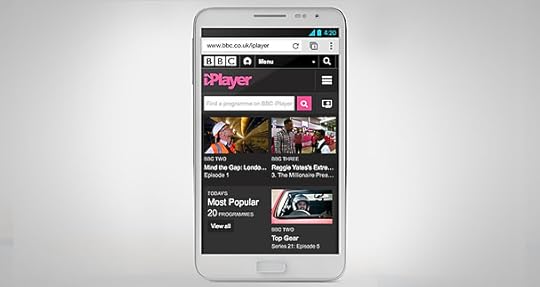
The screen framework is adapted to better fit the key user needs on mobile devices
On our TV app, we use a similar framework to the desktop experience. The find tools are on the left, and if you’re here to browse the programmes, you can move horizontally to browse the best of and (previously) hidden gems on iPlayer.

iPlayer home screen on a connected TV app with a similar framework to a desktop computer
In the coming months, we’ll be integrating the new TV app into the Connected Red Button service. And we’ve been working closely with colleagues across the BBC to make sure there’s a joined up experience across the range of BBC TV apps.
Our aim is that once someone is using iPlayer on one device, they’ll be familiar with all instances of iPlayer across all their devices.
Discovery through Channels and Categories
Curated content from the BBC’s TV channels is a new feature we’re introducing as part of the redesign. Previously, the presence of channels in iPlayer was limited to browsing by the broadcast schedule. The new channel pages, with their strong branding, provide a destination where our editorial teams can showcase programmes from each channel, and surface content that is made available exclusively for iPlayer, or premiered on iPlayer first.

BBC ONE page on the new BBC iPlayer
They are also home to each channel’s live TV stream. Of course, we continue to offer the full schedule through our TV Guide, as well as channel-specific schedule pages.
Categories is another area where we’re making it easier to discover new content. We continue to offer the list view of everything in each category but you’ll also find a curated view of programmes you might not have known about.
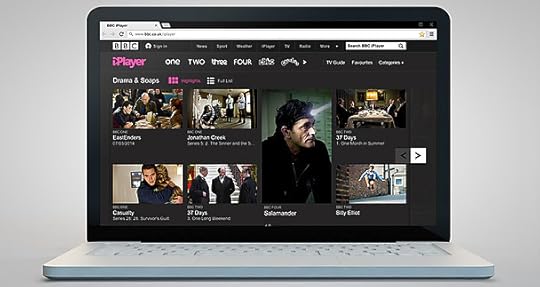
Categories in the new iPlayer are a key part of the discovery experience
A more personal iPlayer
Helping users personalise iPlayer was a key goal of the redesign. You’ll find that favourites work similarly to how they work currently but with the bonus of a responsive approach: now, if you sign in to the site you’ll be able to get your favourites on your mobile and tablet devices as well. We’re also working hard to integrate signing in into our native mobile, tablet and TV apps so we can offer a seamless experience across the platforms.
We’ve also made “Recently Watched” easier to find. It gets a much more prominent place on both the responsive site and the TV app and provides a “warm trail” into programmes. We think of this as a form of “lazy favouriting”, and are working to improve this further so we can also use this space to surface new episodes of the things you’ve watched in the past.

The new BBC iPlayer home page with the Recently Watched area open showing three programmes
The redesign also paves the way for the future development of a much more personal iPlayer. So, for example, we’ve recently prototyped incorporating personalised recommendations based on programmes you’ve watched and your favourites into the browsing experience.
Never a dead-end
When approaching the playback page, we had to keep in mind the fact that user needs change throughout the watching experience.
Since a majority of our users currently use iPlayer to catch-up with the latest episodes of programmes they follow, most journeys in the new iPlayer are biased towards getting users to the latest episode as quickly as possible. So the first user need on the playback page is to establish that this is the right episode, and if not, to get you to the episode you’re looking for. To aid this we list all available episodes directly below the programme information of the episode you’re on.
Similarly on TV, when the programme starts playing, the playback controls are briefly displayed in their expanded state, exposing the long description of the episode, to help you make sure you’re on the correct episode. And, if you’re not, you can access all other episodes to the left of the programme information.
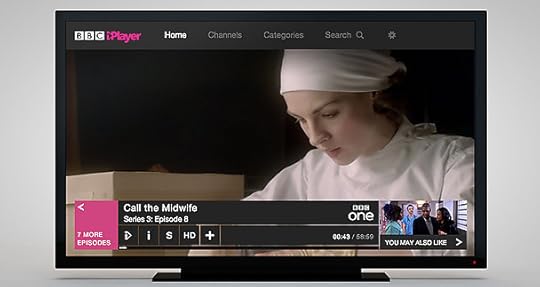
Playback controls on the connected TV app include an easy way to get to other episodes
During playback the UI dims down if you’re watching embedded on a web page, or disappears completely in full-screen mode. On the TV app, you can still browse iPlayer while the programme you’re watching continues playing in the background – an experience users will be familiar with from our red button service.
At the end of the programme, we display the next episode if it’s already available, and give you recommendations for other relevant programmes.
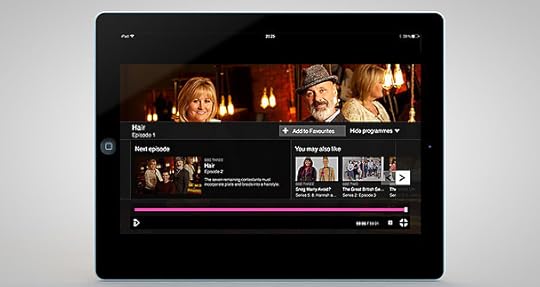
The More Programmes panels open automatically at the end of playback
Similarly, while you’re browsing a category, if you haven’t found anything that takes your fancy, we give you a link to the full listing of that category, as well as links to other categories if you want to skip to another genre.

End of the Highlights category on the new iPlayer with onward journeys
And if you’ve searched for something and it’s no longer available on BBC iPlayer, we’ll give you a link to the programme website so you can find out if it’s coming back on air and to iPlayer.
Redesigning for new and existing users
An important part of any major redesign is getting it right for new and existing users.
For example, we knew that to provide a simpler interface that makes iPlayer as inclusive as possible for new users, we might need to move some of the features that existing users enjoy to a different part of the interface.
To get this right we have repeatedly user tested each change. And we’ve been pleased to see that existing users find them intuitive. We think this is for a few reasons: we’ve made sure users can still find what they’re looking for using routes they’re familiar with on the current iPlayer; we reused design patterns that are familiar from other parts of bbc.co.uk; and we’ve ensured that changes to the key part of the iPlayer experience, the new playback page, are straightforward and evolve from the current design.
Finally, one thing we haven’t changed. Users who’ve come to enjoy that little bit extra from iPlayer (and Spinal Tap fans) will be happy to see that, where operating systems allow, the new iPlayer’s volume controls still go up all the way to 11.
Redesigning BBC iPlayer has been a great experience. And I hope we’ve gone some way towards living up to the responsibility that comes with working on a service that’s enjoyed by so many people. You’ll see this is by no means an end but very much a starting point for iPlayer to evolve further in future.
I look forward to hearing what you think. You can use the survey we’ve created to capture your feedback, or post your comments to this post and I’ll do my very best to respond to you.
Thank you for reading.
Kutlu Canlıoglu, is Creative Director for TV&iPlayer, BBC Future Media
March 13, 2014
Making the new iPlayer accessible for all
Hi,
I work in the Accessibility team in BBC Future Media. We provide tools, training, and support to teams within the BBC so that they can deliver web content and applications that are accessible to disabled audiences.
Earlier this week a public preview of the new BBC iPlayer on the web was released. This new site replaces separate mobile, tablet and desktop sites with one responsive site. In streamlining the user experience for all users we wanted to also exceed existing levels of accessibility with the current BBC iPlayer and, more importantly, make the site more usable for disabled users. To do this we embedded accessibility into the design and development process from the outset. This post talks through some of the headlines of how we went about doing this.
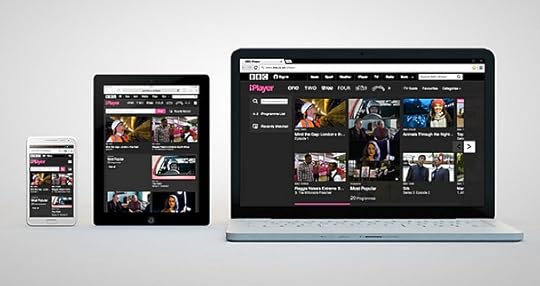
The new BBC iPlayer replaces mobile, tablet and desktop sites with one responsive site
It was important for us to understand what we were trying to achieve from the start as well as understand how we were going to achieve it. We ran training courses for the user experience, developer and test teams to make sure that everyone understood what their role and responsibilities were and where to find resources such as the BBC Accessibility Guidelines and the newly published Mobile Accessibility Standards and Guidelines.
User Experience
Before we began work we already had a lot of data and user feedback about likes and dislikes with the existing iPlayer website. This was fed into the design process helping to shape wireframes and UX along with the BBC requirements of standards and guidelines.
One reoccurring piece of feedback was that it was impossible to tell from the search results page which programmes were audio described or subtitled. We addressed this by listing all programmes in the search results page together with the alternative formats they are available in such as AD (Audio Description), SL (Sign Language), HD (High Definition) and SD (Standard Definition). Just as before Audio Described and Signed also get their own Category while you can turn on Subtitles on all on-demand content using the subtitles button from within the player.
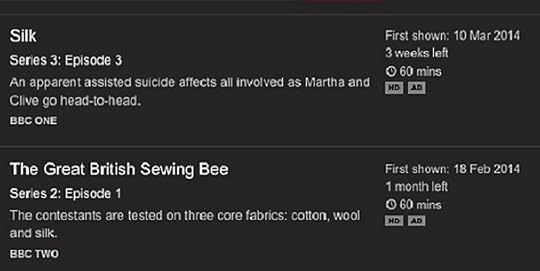
Search results listings now show Audio Described and Signed programmes
Design was not signed off until it was annotated for accessibility. The site was broken down into page templates and shared modules, the wireframes for which were then annotated to ensure what was being proposed could be made accessible, how, and to iron out any major issues prior to development. Typically annotated UX would include:
• Structure – annotations for headings, sub headings, lists and areas for WAI ARIA (Web Accessibility Initiative Accessible Rich Internet Applications) Landmarks
• Keyboard access – visible focus states for elements and unique selected states (e.g. for menu items), clarification of where to set focus when page content updates, content order and focus order
• Colour – meeting the 4.5:1 colour contrast minimum, use of colour to reinforce meaning (and not rely on it)
This proved invaluable. Even though the UX evolved as development got underway it meant we had a uniform, accessible framework from which to hang designs. It also allowed us to anticipate potential issues before they got coded. For example early on we decided that we wanted to list each programme as a list item rather than a heading. We felt pages would otherwise become overwhelmed with too many headings, which would undermine their value as a means to navigate for screen reader users.
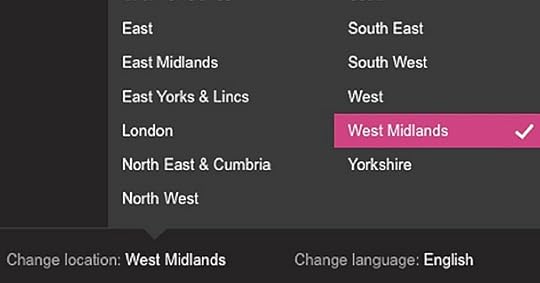
The popup box has a visible tick to show it is selected
For the benefit of sighted non-mouse users care has been taken to ensure clear focus states are used as well as unique selected states. To avoid confusion for those that may not be able to differentiate colour some features, such as the Change Language and Change Location module, also include a visual prompt, a tick, to make it very clear what is selected and what is focused.
Another outcome of annotating UX was that we were able to build up BBC iPlayer specific requirements for accessibility, above and beyond the BBC standards and guidelines, which are particular to the needs of the site. For example, with regards to the main heading of pages, the H1, we decided it should always follow the ‘main’ Landmark in the content order. This meant consistency across templates which makes pages much easier to follow for screen reader users across desktop, tablet and mobile. This is important as different development teams work on different parts of the site so it could have been easy to have a slightly different structure on each page.
Finally we also ensured that all Landmarks were followed by a correctly marked up heading in the content order. iOS VoiceOver, up to and inclusive of iOS6, does not announce the name of the Landmark but instead announces just ‘Landmark’ i.e. ‘Landmark’ not ‘Navigation’. Adding a heading immediately after in the content order means that iOS VoiceOver announces the Landmark and heading as one item giving all Landmarks a unique and understandable name. This bug has since been addressed in iOS7 however coupling Landmarks with headings is still valuable in the site today.
Development
Working in an agile, sprint run environment we then looked at how we could embed accessibility into development. Our goal was to ensure that accessibility was considered part of overall development rather than an-add on. We avoided allocating a single ‘accessibility Sprint’ to do all the accessibility work and instead added user stories and tasks for accessibility into each Sprint as well as included accessibility into acceptance criteria for other relevant user stories or tasks. This was taken from the annotated UX and meant that developers knew up front how best to code a feature.
There were challenges along the way. UX sometimes changed, or new releases in technology meant we had to rethink development. The new iPlayer menu on mobile and tablet, while accessible, is not as usable as it was prior to changes in iOS7 however we are be working to address that.
Fortunately other changes in technology meant other issues were fixed. For example in earlier versions of iOS6 there was a bug where zoomed content would be momentarily cut off when devices were in landscape. Our standards require that pinch zoom is supported which meant the layout would appear broken to some users. This was fixed in iOS6 so we are now able to support people who like to zoom without compromising or breaking the design.
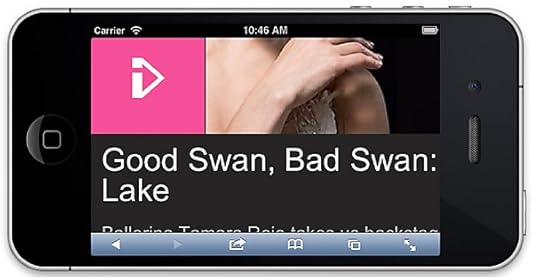
Pinch zoom is enabled within new iPlayer as per the BBC Mobile Accessibility Guidelines
The Standard Media Player
The new BBC iPlayer uses the new BBC Standard Media Player (SMP). The new player offers clearer visual design for buttons, good contrast, keyboard and mouse accessible tooltips. Work has also gone in to improving subtitles; we now have support for different colours for different speakers on catch up content.
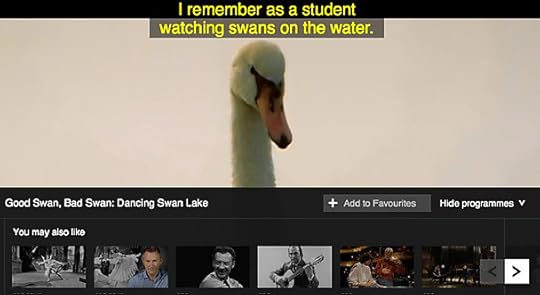
The Media Player with subtitles at the top so they are more prominent
We’ve also improved keyboard access as well as labels for screen reader and voice input users. This is a challenge as different assistive technology and browsers have variable support for Flash plus upgrades to browsers and screen reader software can break something that previously worked.
Finally we are testing out the ability to change the size of the player controls to help users with lower vision or mobility impairments. This currently works in Firefox using Control + Shift + P or O and is not a fully-fledged feature yet as we explore more about it.
Standard Media Player also introduces plugins to the playback experience. You can add the programme you’re watching to your Favourites as well as discover more episodes and related programmes from within the player. These features and functionality are available from within the page but obviously make content a lot easier to use when available from within the player. It cuts out the overhead of having to navigate out of the player, find something else to watch, update the page, navigate back to the player and start again. This is an example of how we can make iPlayer not just accessible but also much more usable for disabled users with the introduction of new features which are beneficial to everyone.
You can find out more in our Media Player Accessibility help.
Testing
We submitted the site for third party testing which included expert technical testing as well as usability testing with disabled users. This helped understand better what features people liked and how we could tweak them to make them better. It was useful to see just how much people relied on pinch zoom when on mobile as well as tweak the logic of our headings for screen reader users. Hopefully during the preview, we will gather more feedback that we can work into the designs.
So that’s a quick tour of some of the accessibility work that’s gone into iPlayer.
As iPlayer evolves so will the accessibility. Hearing feedback from you and other users is invaluable and really helps us better understand how to make iPlayer more usable so if you have any comments or questions please post them below or email us at mailto:accessibilityteam@bbc.co.uk.
Henny Swan is Senior Accessibility Specialist, UX&D, BBC Future Media
March 12, 2014
Welcome to the new BBC iPlayer on TV
Hi, my name is Marcus Parnwell and I am Executive Product Manager for BBC iPlayer on connected TVs, games consoles and TV operator platforms.
We are currently offering users a preview of the new version of BBC iPlayer for big-screen devices. If the preview is available for your TV device (see the list below and the BBC iPlayer help pages), you will see a new link at the bottom of the screen inviting you to try out a new version.
We launched the current TV version in 2011 and since then we have seen a dramatic change in how people use BBC iPlayer. Whilst we know users still want to catch-up on those programmes they know they’ve missed on TV, a lot of you want an easier way to find new things to watch. We are aiming to meet both needs with this version.
So what’s new?
Channel and Category homepages
We know that you like to use BBC iPlayer to find programmes by both genre and channel. We have improved this experience to allow you see a curated stream of content – either highlighted by our editorial teams or because it has been popular. Our user testing indicates this is an easy way for users to discover programmes they may not otherwise have known about.
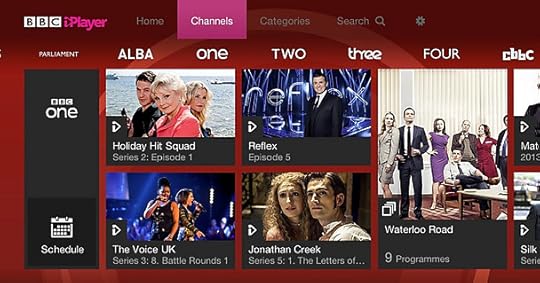
BBC ONE channel page
Collections
You will notice some double-height images - these are collections. These may include all the episodes from a series, or all the programmes that from an on-air season, such as our current BBC FOUR “Ballet Season” programming. When you chose a programme from a collection, we will highlight more from that collection in the play-out area so you can easily go from one episode to another.

A collection page
More like watching normal TV
With the current version of BBC iPlayer on TV, it’s not always easy to find something else to watch. When you finish watching an episode then you have to leave the playback area to start looking for the next show. We want to make watching BBC iPlayer as easy as normal TV - a seamless experience without breaking playback.
So now you can browse all of BBC iPlayer without leaving playback. So if the credits are rolling or you are just not that into what’s on, then pick up the remote and browse our suggestions of other programmes you may also like or else return to the Home, Channels or Categories areas. And don’t worry if you change your mind - you can always return to what you were watching.
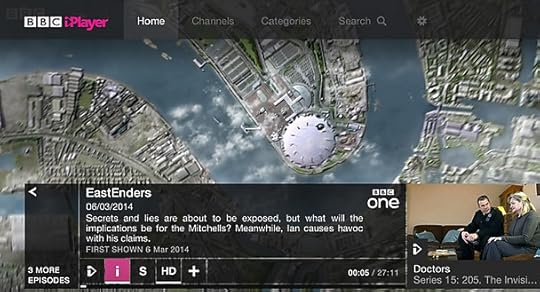
Playout
‘Find tools’ and Search
Know what you want to watch? Great. We provide a simple set of ‘Find tools’ that are designed to help you quickly locate the programme you’re looking for. These are found at the front of the stream and allow you to find all the programmes within a given area. On the home screen, you will be able to access new episodes of programmes you’ve recently watched or programmes you have added to your Favourites. In the channel and category areas we provide schedule and A-Z lists. Search is accessible from any page and uses auto-suggest technology to get you to the programme you’re after as quickly as possible.

What devices?
We are bringing this preview to a range of TVs, games consoles and the Freesat with Freetime box. The list of devices to receive this preview includes:
Brand Type Year/Model
Sony TV 2013
Sony Console PS3, PS4
Samsung TV 2012 & 2013
Panasonic TV 2011, 2012 & 2013
LG TV 2012 & 2013
Freesat Set top Box Freetime
This is only the start – we are looking to bring this new version to current HTML based big screen devices.
For a full list of available models please go to the BBC iPlayer help pages.
Where is radio?
We decided not to include radio within this new version of BBC iPlayer. The low usage of radio on big-screen devices means it is not cost-effective to develop and support. You can continue to enjoy live radio on all Freeview and Freesat devices and live and on demand radio via BBC iPlayer Radio on computers, tablets and smart phones .
We are releasing this new version of BBC iPlayer for TV as a preview so that we can hear your opinions and improve the product. So please let me know what you think – either via the comments below or using the TV survey we have provided.
Marcus Parnwell is Executive Product Manager, BBC iPlayer on Connected TVs
March 11, 2014
Introducing the new BBC iPlayer
Hello, I’m Dan Taylor, Head of BBC iPlayer and today I’m delighted to share how we are evolving BBC iPlayer for the multiscreen world, starting today with the rollout of a new version for computers, tablets, mobiles and connected TVs.
Just over six years ago, on Christmas Day 2007, we launched BBC iPlayer, offering users the opportunity to catch-up with the last 7 days of BBC programming via their computer.
Fast forward to now and BBC iPlayer is available on over 1,000 different devices and serves 10 million programme requests a day. It now offers more than just catch-up, with live streaming, archive collections, exclusives and premieres. We’ve also introduced innovative new features such as mobile downloads, enabling you to watch offline and on the go, and Live Restart, enabling you to jump back to the start of a programme while it’s being broadcast. It’s a measure of how loved BBC iPlayer now is that it’s the number one brand in the UK according to YouGov’s BrandIndex Ranking.
However there’s always room for improvement and following extensive research and user testing, we are today rolling out a new web version of BBC iPlayer (accessible via bbc.co.uk/iplayer on computers, tablets and smart phones) and a new TV version (accessible via the existing BBC iPlayer app on a range of connected TV devices). The BBC iPlayer mobile and tablet apps will be updated with the new interface in the coming months.
The new iPlayer has been designed for a multiscreen world, so the experience is consistent, but optimised across PC, tablet, mobile and TV devices and we've built it in such a way that we can rapidly develop and release new features across those four screens.

The new BBC iPlayer on tablet, smart phone, TV and computer
The new web version of iPlayer has been developed using responsive design, which means we can deliver the iPlayer experience to multiple different screen sizes without building separate versions. It also means that if I share a link to iPlayer from my computer, it will work just fine if you open it on your mobile or tablet browser.
A major focus of this release is making it easier to find something to watch, helping you quickly and easily find the programmes you know you’re looking for and, crucially, helping you discover something new. The current iPlayer’s pretty good if you know what you want to watch, but we know that 42% of visitors are now coming without a particular programme in mind.
Home screen
With that in mind, we've created a brand new home screen that's simpler, more visual and easier to browse. There’s a consistent navigation bar along the top, providing easy access to channels and categories. There’s a ‘Find tools’ panel, of which more later. However the majority of the screen is dedicated to an image-led browsing experience.

The home screen of the new BBC iPlayer on a computer
Hovering over a programme image provides a short description of the episode along with its duration and when it was first shown - simple information that users have told us they find useful in selecting a programme to watch.
Channels
It’s not just the homepage in new iPlayer which offers this new image-led browsing experience. We've also developed such pages for each of our TV channels, creating a place to discover and enjoy the best those channels have to offer even when they’re off air, complementing the more traditional schedule view.
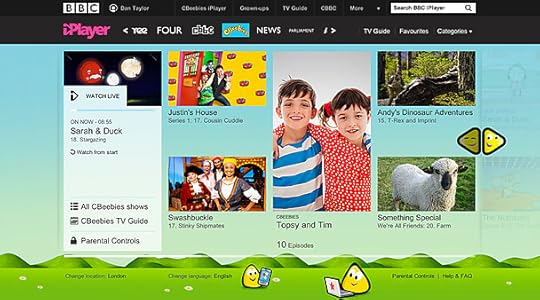
The CBeebies channel in new BBC iPlayer
Categories
We've created a similar browsing experience for categories and responded to user feedback by replacing the Factual genre with genres which users talk about when describing their TV viewing habits: Documentaries, Food, Arts, History, Science & Nature. These categories showcase the range of catch-up, archive, exclusives and premieres – all forms of TV content in one place.
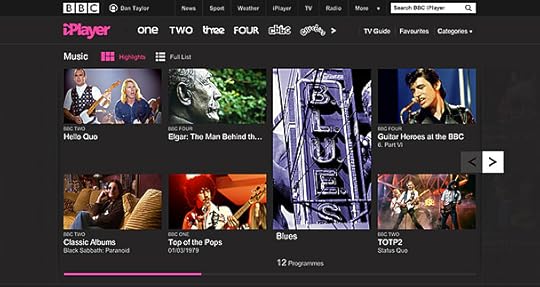
The Music category in new BBC iPlayer
And it’s not just genres. There are also categories for Audio Described and Signed content and for Northern Ireland, Scotland and Wales, showcasing the best programmes from and about those nations. In addition to the highlights view, each category also offers a full A-Z list, which details every programme in that category.
Collections
Collections are a brand new addition to BBC iPlayer which aid programme discovery by grouping programmes by series, season, event or theme. BBC Four has been releasing themed archive collections for the last few years but they’ve been difficult to find in iPlayer. The new iPlayer enables us to showcase those collections on an ongoing basis.

BBC FOUR Post-War Architecture Collection
Playback
Of course, watching programmes is the beating heart of iPlayer and we’ve optimised the new playback page for what users are looking to do before, during and after viewing.

New playback page
Beforehand, we present all the key information you need to decide whether to watch and provide simple navigation to other episodes from the same series, in case you were after a different one. Once you hit play, we dim the lights and get out of your way.
The new web version of iPlayer makes use of the BBC’s new Standard Media Player which, as well as providing our best ever playback experience across screens, also enables us to develop plug-ins to enhance the playback experience.
For example, if you’re enjoying a programme and decide you don’t want to miss out on future episodes you can now add it to your Favourites without leaving the playback experience.
At the end of an episode, if the next episode in the series is available, we’ll cue it up. We’ll also always offer you suggestions of other programmes you may also like, powered by a new and improved recommendation engine.

Onward journeys from playback
This panel will also include onward journeys to other relevant content on BBC Online, such as BBC iWonder guides.
Find tools
We've not forgotten about the 58% of users who arrive knowing exactly what they're looking for, with the introduction of Find tools.
First, we have the ‘Find a Programme’ box, which not only remembers your recent searches, but also suggests what you might be looking for as soon as you start typing. So, if I type ‘E’ I can get straight to EastEnders.

The Find A Programme box suggests what you might be looking for
Next we have the A-Z Programme List, which does exactly what it says on the tin. We know many users really value the A-Z as a simple way of scanning the full iPlayer inventory.

And finally, a Recently Watched section which remembers what you’ve watched recently so you can quickly and easily resume watching a programme you were part way through or find new episodes of a series you've been enjoying.
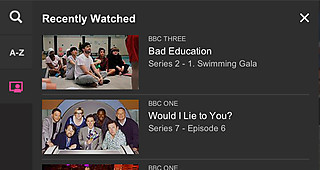
Accessibility
Last but by no means least, we’ve invested a great deal of time and effort in making the new iPlayer as accessible as possible. Pages are organised visually into sections with clear headings to ensure both sighted users and blind users with screen readers can navigate content across desktop, tablet and mobile seamlessly. There are also improvements to the Standard Media Player to support users with different set ups including keyboard-only users, screen reader users and voice input users.
Audio description, signed and subtitled content are at the heart of our offering. Subtitles are available on catch-up content via the media player itself (just click/tap the ‘S’ icon) and soon we will soon be adding support for Audio Described and subtitled programmes on mobile and tablet browsers. You can read more about this, and other updates, in our accessibility FAQ.
So, that's a whistle-stop tour of the new product. We've been busy testing it with users and I’m pleased to say that they’ve been telling us its “simple”, “clearer”, “easier”, “more expansive” and “just better”. Critically, they’ve also been telling us that they’ve been discovering programmes they wouldn’t previously have found.
I’m very proud of what the iPlayer development teams in London & Salford have built and as I mentioned, this launch is just the beginning. We've got ambitious plans for later in the year including extending the standard availability window from 7 days to 30 days and introducing new IP only channels (such as a Radio 1 video channel), subject to approval from the BBC Trust. We also have a raft of exciting personalisation features in mind.
Thanks for reading. Please do have a play with the new iPlayer and let us know your thoughts - we’ve created a special survey to capture your feedback.
Also, do look out for blog posts from other members of the iPlayer team over the coming weeks explaining different aspects of developing the new iPlayer.
Dan Taylor is Head of BBC iPlayer, BBC Future Media
March 10, 2014
News Archive Connected Studio: Build Studio
The plans for the BBC’s News Archive are moving apace now following a really creative two day Build Studio event in Belfast last week. Eight Indy teams who successfully wowed us at the Connected Studio event in January came to build prototypes and hone their ideas. We were housed in the Titanic Centre in Belfast, for long hours sat on chairs rumoured to have been made for the ship itself. We managed to achieve a lot more than just re-arrange them!
The ideas broadly crystallised around three, sometimes overlapping, themes. Using archive to enhance and enrich audience understanding of News happening now; exploiting local and location based experiences; and making experiences more social and personal.
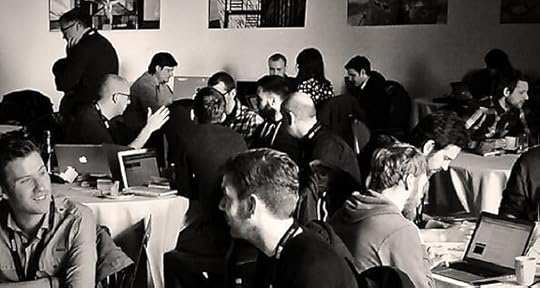
Teams at work at the News Archive Build studio
Audiences consistently tell us they want News stories with more context and depth. News can sometimes feel like a moving car. It can be quite hard catching up or getting into a News story when you arrive in the middle of it happening. However, audiences do not like feeling they are being told what they need to know, they want to control and discover for themselves. Can the archive help meet these needs with a story like Ukraine and Crimea for example? We have been covering the story since before Stalin’s purges. Loftus Media & Softwire, Big Motive, VBOT and Think all explored ideas around this theme.
The extraordinary growth in mobile use, 50% year on year grow this month for the BBC, means storytelling informed by where you are is becoming increasingly interesting. Journalists from TV, Radio and Newspapers have traditionally not really given much thought to where the person consuming your story is, beyond very broad geography. Archive and location are also obvious partners. If you care about News local to you, you are likely to care about events in the past that are local too. Aerian Studios and Planning Unit teams both looked at the kind of experiences that could be created.
Finally archive also has really potency to drive nostalgia and connect with audiences emotionally. Social networks, and the instinct that drives people to share content, is often driven by a similar emotional power. So how can we exploit that apparently similar sensibility? Clearleft, and the team from Nixon McInnes & BBC R&D looked at this.
Overall the teams delivered a range of strong, distinct ideas at the end of an intense couple of days. The next step is to test these simple proofs of concepts with audience panels, and use this research to help us decide which to develop further as fully-featured pilots or live trials.
Peter Rippon is Editor, BBC Online Archive
BBC's Blog
- BBC's profile
- 28 followers



